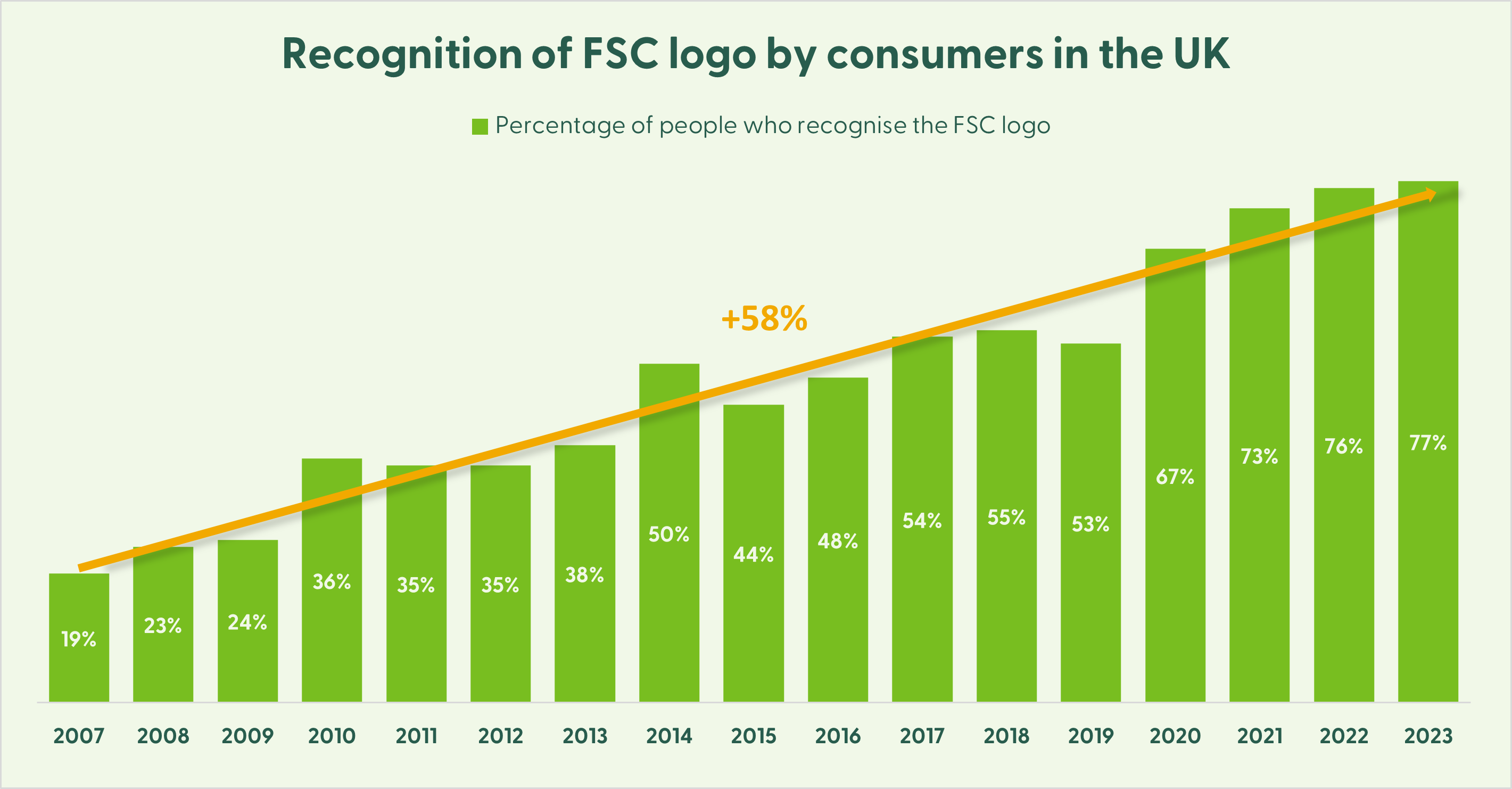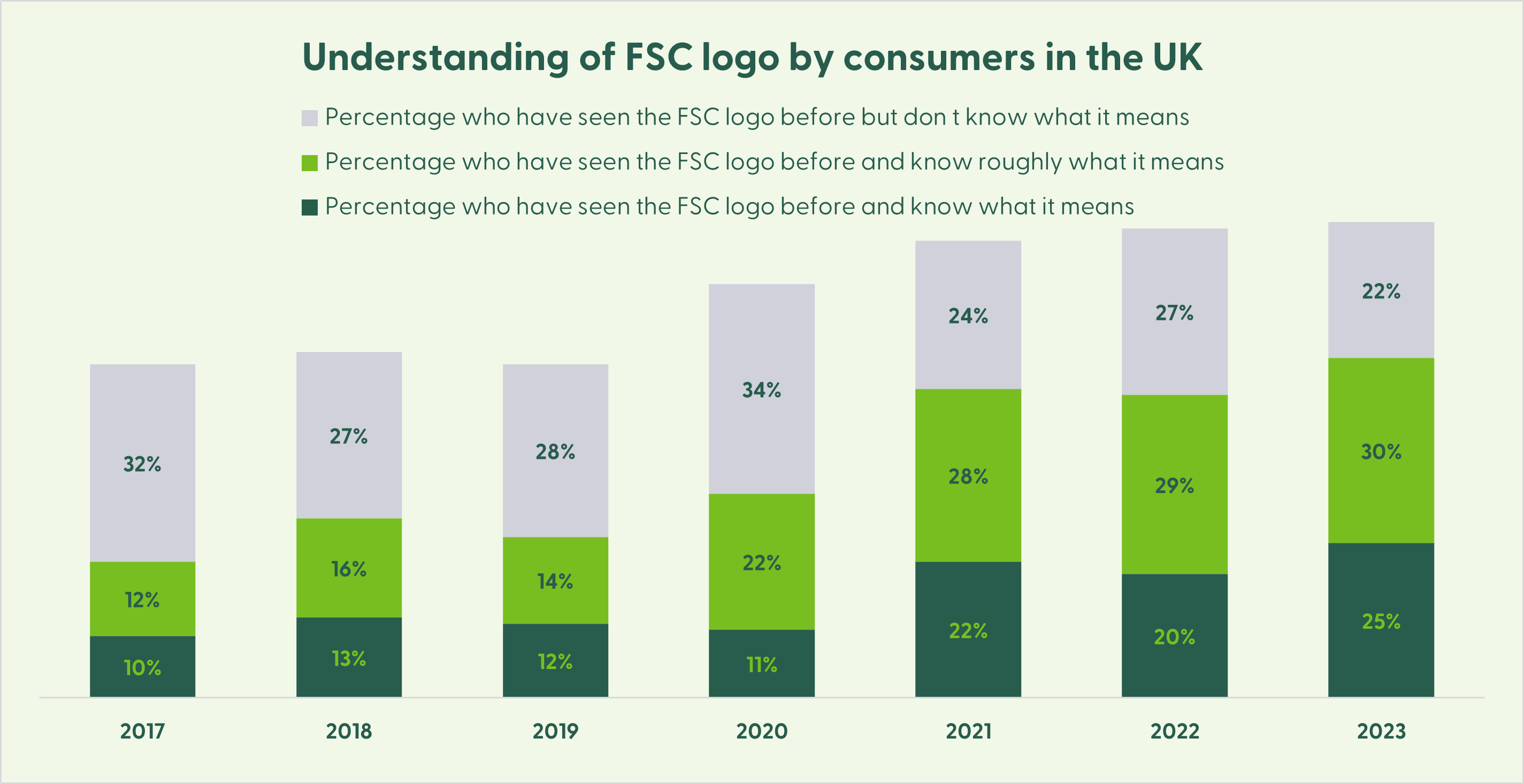Insights from the UK
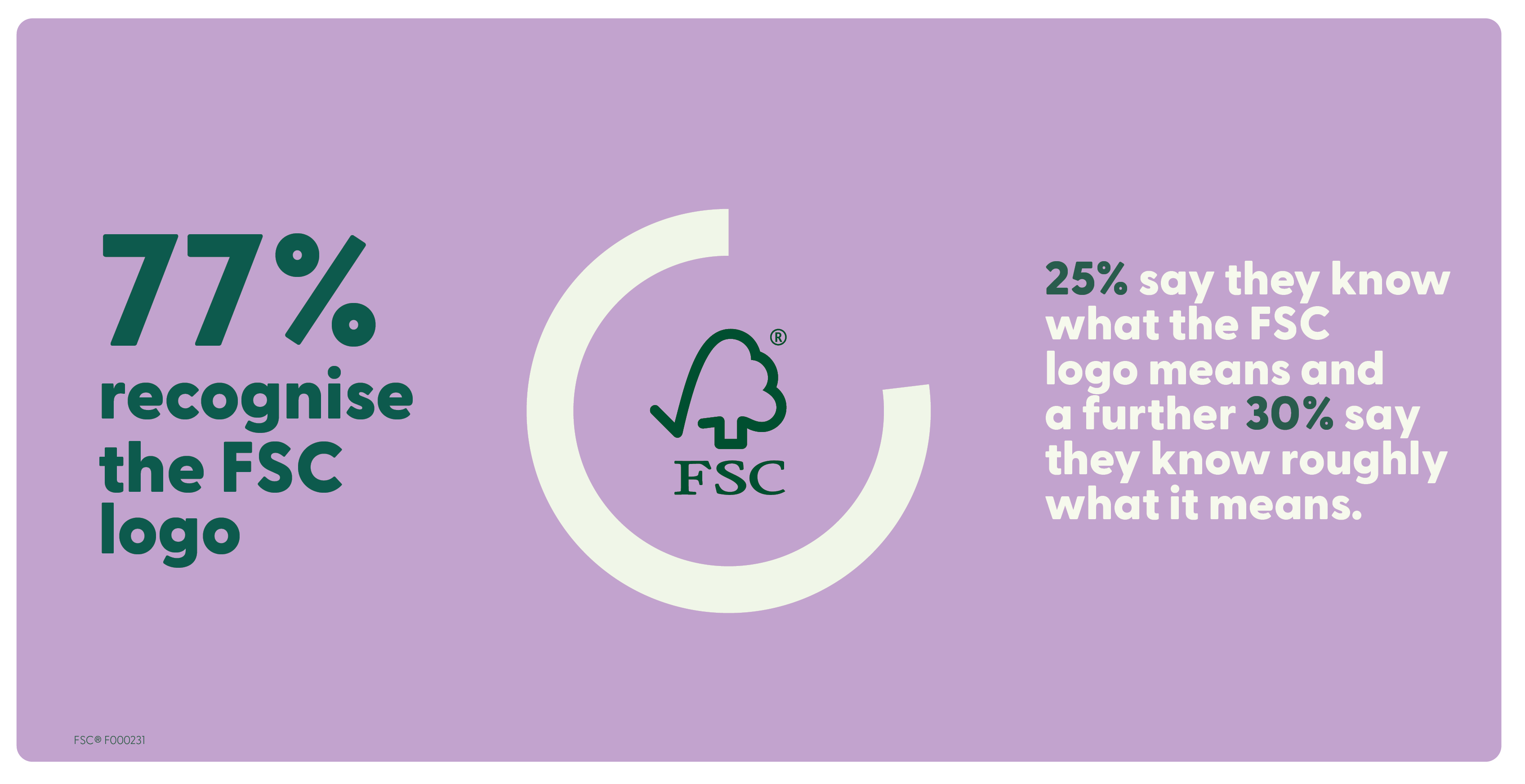 Our 2023 survey revealed that 77% of people in the UK recognise the FSC logo. 25% say they know what it means, and a further 30% say they know roughly what it means.
Our 2023 survey revealed that 77% of people in the UK recognise the FSC logo. 25% say they know what it means, and a further 30% say they know roughly what it means.
30% of those who recognise the logo recall buying an FSC-certified product within the past 3 months, 19% within the past month. 41% say they always or usually give preference to FSC-certified products.
Once the meaning of FSC was explained, 71% of all those surveyed, said they would be very or fairly likely to give preference to FSC-certified products in future. 85% of those who said they both recognised and understood the FSC logo, and 81% of those who recognise it and know roughly what it means, said they were likely to give preference to FSC-certified products.
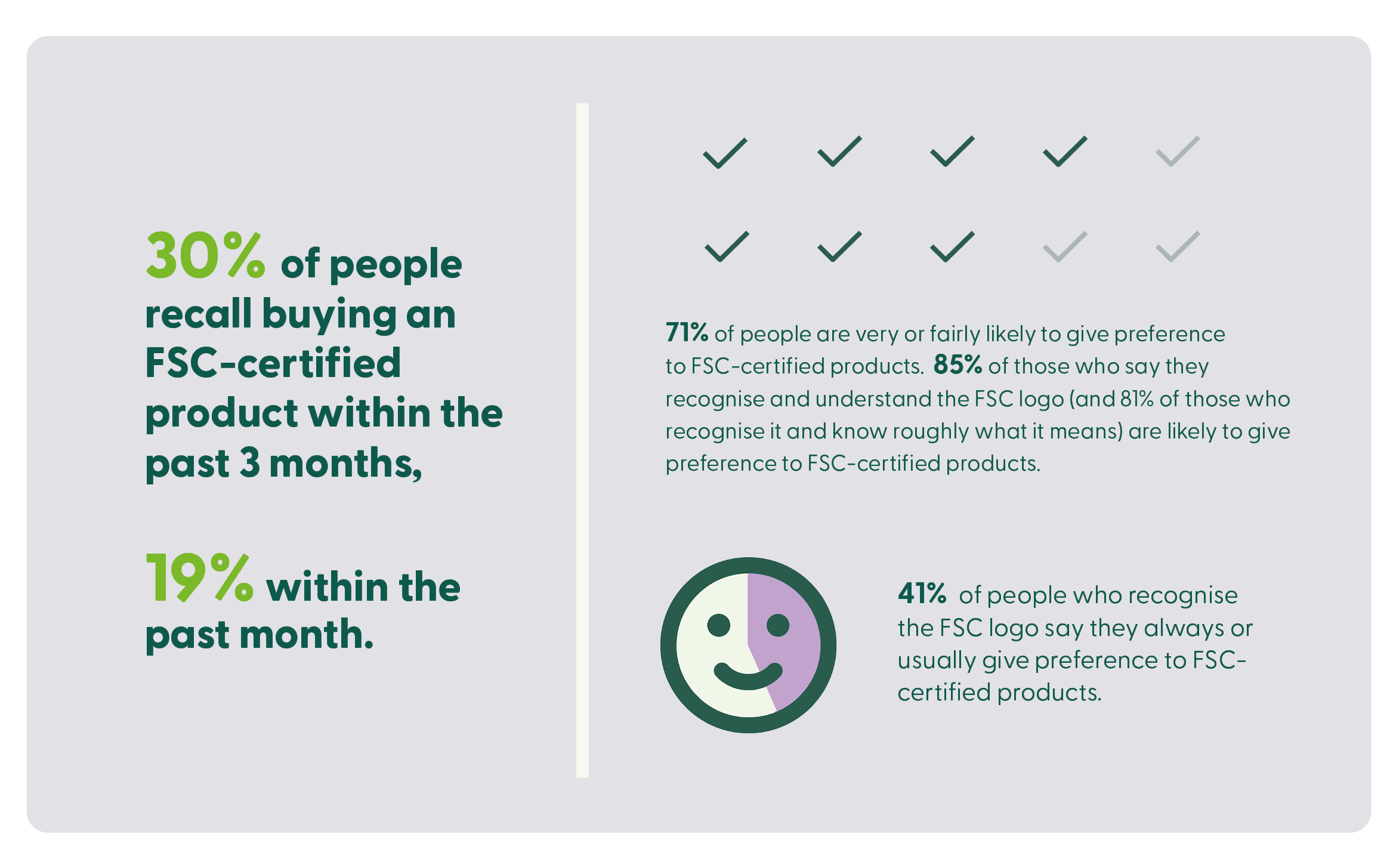
However, only 38% of people claim to look for products that carry certification labels when they shop for forest-based products, suggesting that further promotion of certifications, beyond just labels such as FSC, may be beneficial to support consumers in meeting their ethical shopping preferences. 51% stated that they would be prepared to pay more for an FSC-certified product, with 28% prepared to pay up to 5% more and 10% prepared to pay up to 10% more.
Half of those surveyed were of the belief that all wood-based products available in the UK should be made from sustainable sources and a further quarter thought at least some should meet this standard. 60% thought that consumers have a responsibility to ensure that the products they buy, and the packaging they use, are responsibly sourced, but 71% held businesses responsible for the sustainability of their products and packaging.
This survey (21/03/2023 - 23/03/2023)was conducted in United Kingdom by Kantar via OnLineBus, a sample of 1279 UK adults aged 16+ were interviewed.
Awareness and understanding of the FSC logo continues to increase
Awareness of the FSC logo has doubled over the past 10 years, with 77% of people in the UK recognising the FSC logo in 2023.
“It is positive that recognition of the FSC logo is continuing to increase, as it can be nigh on impossible to tell just by looking at a piece of furniture, or a greeting card, where that wood used originally came from. But if the product has an FSC label, it means it is made with materials that support responsible forestry.”
- Rosie Teasdale, Executive Director, FSC UK
Understanding of what the FSC logo means also continues to increase each year, with 25% saying they know what it means in 2023 (+ 15% on 2017), and a further 30% (+18% on 2017) saying they know roughly what it means.
You can view the results from our previous UK consumer surveys here.
Global consumer awareness
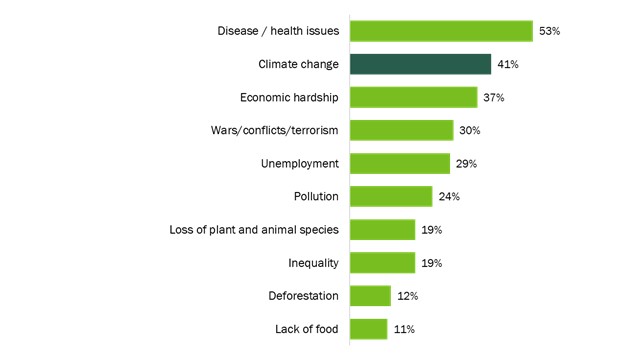
FSC's 2021 global research reveals that consumers want to make sustainability-focused purchasing decisions and trusted third party certification labels play an increasingly important role.
According to research, conducted by GlobeScan for the Forest Stewardship Council (FSC) with 12,000 participants across 15 countries(1.), consumers list climate change as their second most important global worry. When compared against the previous 2017 study, this concern is significantly up (see figure 1). Understandably, disease/health issues ranked first in the research, although the comparable level of concern about climate change sends a stark message in terms of urgency to act. For forests specifically, the research found increasing concerns about the loss of plant and animal species and the impact of deforestation on climate change (see figures 1-2 for more information).
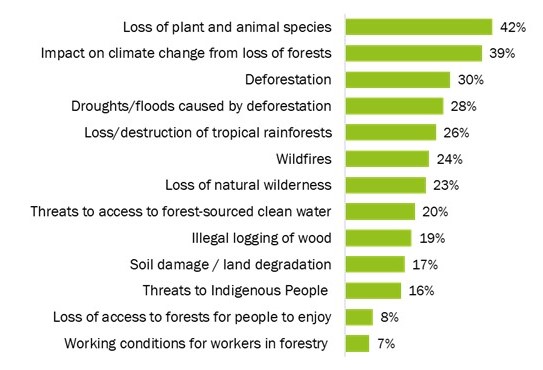
Consumers’ sustainability concerns also appear to increasingly influence their shopping choices, with more than 80 per cent of shoppers saying they expect companies to ensure their wood and paper products do not contribute to deforestation.
Additionally, the survey found that 86 per cent of consumers try to avoid products that damage biodiversity and about seven in ten want to choose products that do not contribute to climate change. As such, consumers pay attention to these factors when choosing wood-based products and packaging and expect companies to ensure their products do not harm the environment.
When asked about influences on their purchases of wooden products, protecting animals and plants and sourcing from sustainably managed forests were among consumers’ biggest motivators - nearly on par with product quality; while for paper or card products, these motivators were even higher than product quality (see figure 3 for more information). Consumers’ belief in their own potential impact is also growing.
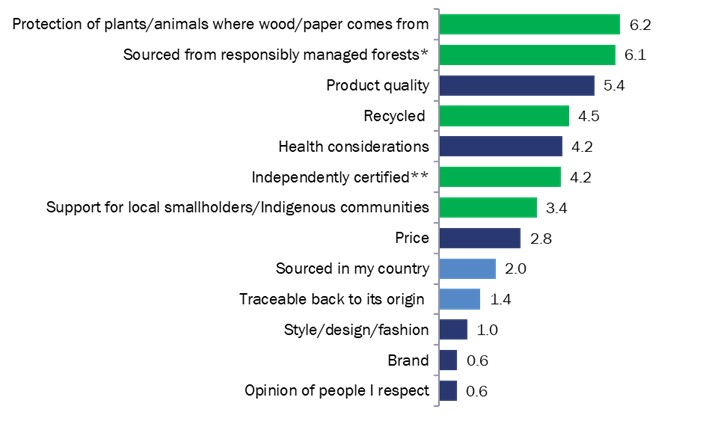
Independent certification also influences product choice among shoppers, with nearly eight in ten consumers believing sustainability product information should be certified by an independent organisation. These results show that the need for trusted eco-labels has never been greater. There is a steep upward trend in people’s interest in companies’ social and environmental impact; therefore, the opportunity for eco-labels is growing, highlighting the value that brands can gain from partnering with trusted certification systems.
(1.) Consumers were surveyed in Canada, Chile, Colombia, China, Germany, India, Italy, Mexico, Poland, South Africa, South Korea, Sweden, Turkey, UK and USA.
(2.) Tracking based on 8 out of the 15 countries base=6,413 (2017) base=6,400 (2021). Tracking countries were Canada, China, Germany, India, Italy, South Africa, UK and USA.
Results from previous surveys
Results from our previous consumer surveys can be found here.

